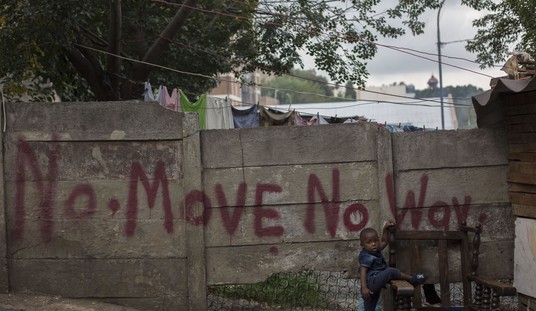When Pope Francis comes to the US to speak about environmental and economic issues he would do well to stop in Chicago and ponder the remarkable story of that city’s river. The Chicago River made the city, and then the city made the river.
As the chief waterway connecting the mid-continent to the Great Lakes, the Chicago River was a magnet for settlement and trade in the early 1800s. The city that rose on the shores of Lake Michigan had unstoppable commercial potential. Even the devastating fire of 1871 that left 100,000 people homeless—nearly a third of the population at the time—proved only a temporary setback. By the end of the decade the city was home to half a million people.
But the bigger threat was from water, specifically sewage. The city dumped human and industrial waste into its river, and drew its drinking water from cribs located far out in the lake beyond where the sewage plume could reach. But periodic rainfalls would push the sewage out past the intakes and contaminate the water supply. Public works projects over the previous decades had failed to solve this risk and every year there were outbreaks of deadly cholera and typhoid.
On August 2, 1885, a massive storm dropped six inches of rain on the city, and the resulting sewage plume overwhelmed the intake cribs. The resulting epidemic killed over ten percent of the city’s population. The crisis had to be solved.
The solution came in the form of the construction of the Chicago Sanitary and Ship Canal, a trench through the continental divide that would allow drainage of water from Lake Michigan into the Mississippi River via the lower branch of the Chicago River. It took 15 years and over 8,000 workers to build, but in 1900 the final cut was made. In what would later be called one of the greatest civil engineering feats of the millennium, the flow of the Chicago River was reversed. The water contamination crisis ended and the city of Chicago entered a century of extraordinary prosperity.
Recommended
Not everyone was happy with the project though. Not surprisingly, cities downriver like St. Louis, tried to block the plan. But in time, and as resources became available, construction of proper sewage treatment plants alleviated the downstream pollution load.
Why should the Pope care about this story? Look closely and it tells us much that we need to know about what the poor in today’s world need to do to achieve their own path of economic development.
Imagine how differently the story would play out today. When the flood hit in 1885, nobody thought to blame it on “climate change” or to claim that households burning coal to heat their homes were responsible for the deaths. Nobody suggested that the solution was to raise the cost of fuel for poor people and use the money to subsidise battery-powered cars for the rich, or to try and shut down the industries on which people depended for their livelihood in the hope that it would somehow modify the weather and, in a hundred years or so, slightly reduce the probability of future floods.
Or at least if anyone did propose such foolishness, nobody paid attention. Instead the leaders of the day confronted the reality of the situation and called for a practical, adaptive solution. It involved a massive reconfiguration of the natural landscape, for the betterment of the humans who were suffering from its ravages. The result was not only relief from disease and death, but a pathway to the prosperity that then paid for, among other things, effective pollution control that saved the river.
Like waterways across the USA, the Chicago River is far cleaner today than it was a hundred years ago, and while it is not perfect, it is once again home to a rich variety of fish and plant life. In the same way, air quality in Chicago has improved, despite the massive growth of the city and its industry, because the wealth from economic growth paid for technologies that have decoupled economic growth from air pollution.
The lesson for the Pope is that economic growth and environmental protection can go hand-in-hand, as long as people focus on real issues and effective strategies. When discussion of environmental issues degenerates into abstract, ideological concepts, money and effort get wasted on futile symbolic gestures. This is the biggest failure of the international obsession with global warming. In the American context such measures have included subsidies for wind turbines and solar panels, tax breaks for expensive electric cars, regulatory overkill, and excess compliance costs for industries and power plants that get passed disproportionately onto low-income households. And far too many poor countries are emulating the worst of these measures, to their own economic detriment.
This is not to say that every massive civil engineering project is a good idea—far from it! But the reversal of the Chicago River was an effective response to a real crisis that was killing thousands of people. It saved countless lives and helped lay the groundwork for a century of human and environmental improvement. By focusing on a real issue and implementing a practical project that directly tackled a genuine problem, an earlier generation of Americans set an example that holds important lessons for world leaders today.

























Join the conversation as a VIP Member